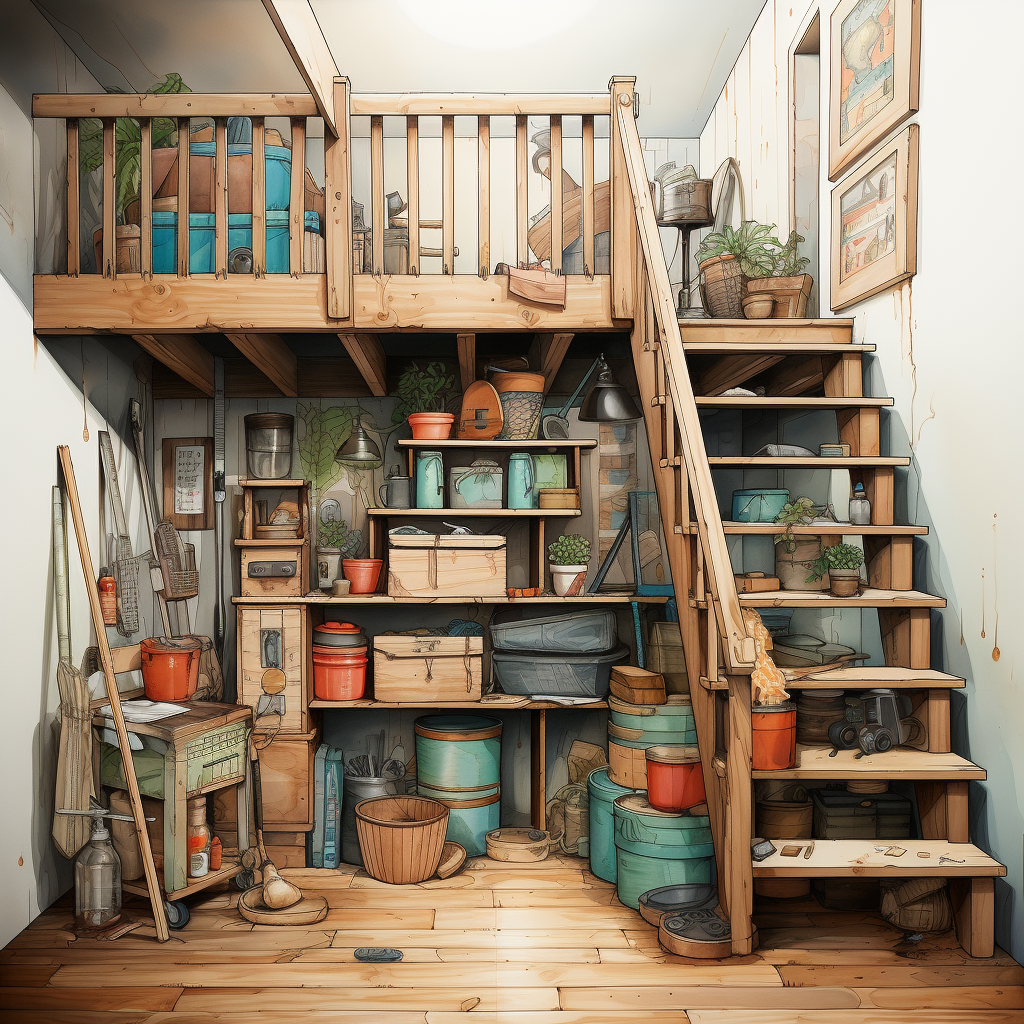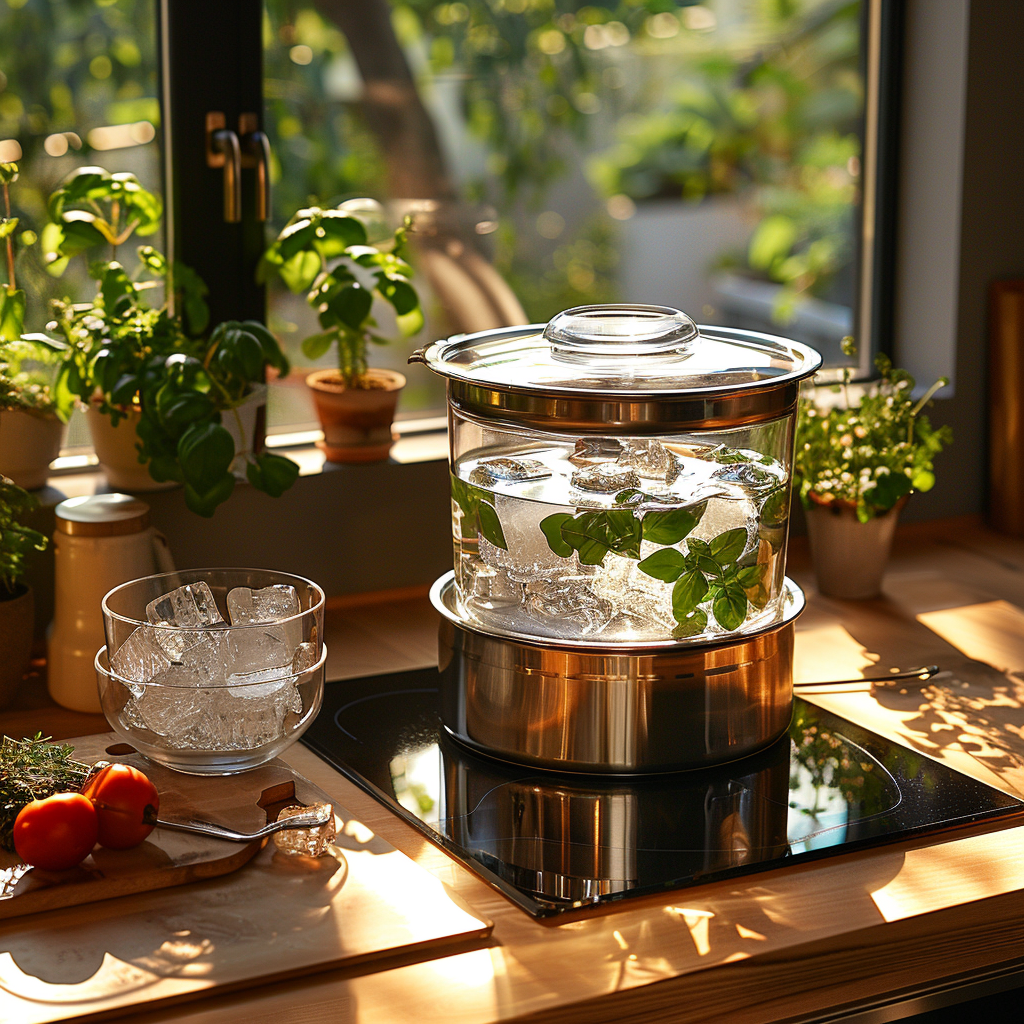
I. Introduction
A. Importance of Efficient Storage in Garages and Basements
Garages and basements often become the default dumping grounds for all sorts of items - from seasonal decorations to old furniture. However, with a bit of organization and some DIY ingenuity, these spaces can be transformed into efficient storage areas. An organized garage or basement not only makes finding things easier but also frees up space for other uses, like a workshop or hobby area.
B. Overview of the DIY Approach for Maximizing Space
This guide is designed to help you double the storage space in your garage or basement using simple DIY methods. Whether you're a seasoned DIY enthusiast or a beginner, these practical steps will provide you with the know-how to effectively utilize every inch of your space.
C. Benefits of a Well-Organized Storage Area
A well-organized storage area offers more than just aesthetic appeal. It can save time, reduce stress, and even prevent accidents by removing clutter and making essential items easy to locate. Additionally, optimizing storage space can increase the value of your home by presenting these areas as functional spaces rather than forgotten corners.
Join us as we walk through a step-by-step process, from assessing your current space to implementing creative storage solutions. Let's turn that cluttered garage or basement into a model of efficiency and organization!
II. Assessing Your Current Storage Space
A. Evaluating the Existing Layout
Before diving into any DIY project, it's crucial to take stock of what you currently have. Start by evaluating your garage or basement's existing layout. Look at how items are stored and identify areas that are underutilized. Consider the flow of the space - is there enough room to move around? Are your frequently used items easily accessible? This initial evaluation will help you understand the specific challenges of your space.
B. Identifying Common Clutter and Space Wasters
Often, garages and basements accumulate items that are rarely used or no longer needed. Identify these clutter culprits - old paint cans, broken tools, outdated electronics, and rarely used sports equipment are common examples. Separating the essentials from the non-essentials is key to freeing up valuable space. This might also be a good opportunity for a garage sale or a donation run.
C. Measuring and Planning for Optimization
Once you've got a good idea of what needs to stay and what can go, it's time to measure your space. Accurate measurements are crucial for planning storage solutions that will fit and function well. Sketch a rough layout, including dimensions of walls, windows, doors, and any fixed structures like pillars or workbenches. This plan will serve as a blueprint for your DIY storage project, helping you to visualize the end result and allocate space effectively.
Remember, the goal is to make the most of your existing space. By carefully assessing your current storage situation, you’ll be able to create a more organized, efficient, and functional area.
III. Essential Tools and Materials
When embarking on a DIY project to double the storage space in your garage or basement, having the right tools and materials is essential. Here’s a guide to what you’ll need:
A. List of Required Tools and Materials
- Measuring Tape: Essential for accurate measurements of your space.
- Level: To ensure shelves and cabinets are perfectly horizontal.
- Drill and Drill Bits: For installing shelving units, hooks, and racks.
- Saw: A hand saw or power saw for cutting lumber or shelving materials.
- Screws and Anchors: Appropriate for the type of walls in your garage or basement (drywall, concrete, etc.).
- Hammer and Nails: For basic construction and assembly.
- Plywood or Shelving Boards: For creating shelves and storage units.
- Brackets and Shelving Hardware: To secure shelving to the walls.
- Stud Finder: Particularly useful if you're attaching shelves to drywall.
- Pencil and Notepad: For sketching layouts and taking notes.
- Safety Gear: Safety glasses, gloves, and ear protection, especially when using power tools.
B. Choosing the Right Supplies for Durability and Efficiency
Select materials that are durable and suitable for the items you plan to store. For example, heavier items require sturdier shelves with strong brackets. If your garage or basement is prone to moisture, consider materials that are moisture-resistant. Metal shelving can be a good choice for heavy items, while plastic bins are great for keeping things dry and dust-free.
C. Safety Considerations and Precautions
Safety should always be your top priority:
- Read and Follow Tool Instructions: Especially important if you’re using a tool for the first time.
- Wear Protective Gear: Safety glasses, gloves, and ear protection can prevent many common injuries.
- Work in a Well-Ventilated Area: Especially important if you’re painting or using any chemicals.
- Keep a First Aid Kit Handy: Always be prepared for minor accidents.
By gathering the right tools and materials and prioritizing safety, you’re setting the stage for a successful and efficient DIY project. Remember, investing in quality tools and materials can make the job easier and ensure that your new storage solutions stand the test of time.
IV. Step-by-Step Guide to Doubling Your Storage Space
A. Clearing and Cleaning the Area
- Remove Everything: Start by taking everything out of your garage or basement. This will give you a blank slate to work with and help you visualize the space better.
- Deep Clean: Sweep and clean the entire area. Consider painting walls and floors for a fresh look and extra protection, especially in damp basements.
B. Installing Shelving and Cabinets
- Plan Your Layout: Refer to your sketch and decide where shelves and cabinets will be most effective.
- Assemble Shelving Units: If using pre-made units, assemble according to the manufacturer's instructions. For DIY shelves, cut your plywood or boards to size.
- Install Uprights and Brackets: Use a level to ensure everything is straight. Securely fasten uprights to the studs in the wall, then attach brackets.
- Place Shelves: Position your shelves on the brackets and secure them. Ensure they are level and at appropriate heights to maximize storage space.
C. Utilizing Wall and Ceiling Space Effectively
- Install Wall Hooks and Pegboards: These are great for hanging tools, sports equipment, and other items.
- Consider Overhead Storage: Install overhead racks for items used infrequently, like seasonal decorations.
D. Creating Customized Storage Solutions
- Build Custom Cabinets: If you have specific storage needs, consider building custom cabinets or drawers.
- Create a Workbench Area: If space allows, include a workbench area. Use the space underneath for additional storage.
- Use Storage Bins and Containers: Organize smaller items into labeled bins and containers for easy access.
This step-by-step guide is designed to help you effectively double your storage space in the garage or basement. By systematically approaching each phase of the project, from clearing out the space to installing tailored storage solutions, you can transform these often-overlooked areas into well-organized, efficient storage spaces. Remember, the key is to plan ahead and work systematically to ensure the best use of space.
V. Organizational Tips and Tricks
A. Categorizing Items for Easy Access and Retrieval
- Group Similar Items: Store similar items together, such as grouping all gardening tools in one area and sports equipment in another.
- Frequently Used Items: Keep items that you use regularly within easy reach. Store less frequently used items on higher shelves or in less accessible spots.
- Seasonal Rotation: Arrange items based on seasonal usage. For example, keep summer items accessible in the front during warmer months and switch with winter gear as the season changes.
B. Labeling and Containerization Strategies
- Label Everything: Clearly label shelves, bins, and containers. This not only helps you find things quickly but also makes it easier to put them back in the right place.
- Transparent Bins: Use transparent storage bins to easily see what’s inside without needing to open each one.
- Color Coding: Implement a color-coding system for different categories of items. For instance, use blue bins for automotive tools and red bins for holiday decorations.
C. Maintaining Order in Your Newly Organized Space
- Routine Clean-ups: Schedule regular clean-ups to maintain organization. This is a good time to declutter and get rid of items you no longer need.
- Stick to the System: Once you have a system in place, stick to it. When you use something, put it back where it belongs.
- Involve Family Members: Make sure all family members know the organization system and follow it. This can be especially important in shared spaces like garages and basements.
These organizational tips and tricks will help you maintain a neat and efficient storage space in your garage or basement. By implementing these strategies, you’ll save time looking for items and enjoy a more functional and pleasant space.
VI. Safety and Maintenance
A. Ensuring Structural Stability and Load Capacity
- Check Weight Limits: Be aware of the weight limits of shelves and storage units. Overloading can cause structural failure.
- Secure Shelving Units: Ensure all shelving units are securely anchored to the wall to prevent tipping or collapsing.
- Regular Inspections: Periodically check for any signs of wear or weakness in shelving units, especially if storing heavy items.
B. Regular Maintenance Tips
- Dust and Clean Regularly: Keep shelves and stored items dust-free. Regular cleaning prevents dust buildup and keeps the space pleasant.
- Check for Dampness and Mold: In basements, particularly, monitor for any signs of dampness or mold growth, which can damage items and affect health.
- Pest Control: Implement pest control measures to protect your stored items from rodents and insects.
C. Avoiding Common Pitfalls and Hazards
- Proper Lighting: Ensure your garage or basement is well-lit to prevent accidents and make it easier to find items.
- Avoid Blocking Vents or Windows: Keep air vents and windows clear to maintain good ventilation.
- Safe Handling: Use proper lifting techniques when moving heavy items, and use a sturdy ladder or step stool to access high shelves.
- Fire Safety: Be mindful of fire safety, especially in garages. Store flammable materials like paint thinners and gasoline in appropriate, clearly labeled containers, away from potential sources of ignition.
By following these safety and maintenance guidelines, you can ensure that your garage or basement remains a safe, efficient, and well-organized storage area for years to come. Regular upkeep and attention to safety can prevent accidents and prolong the life of both your stored items and the storage solutions themselves.
VII. Conclusion
In conclusion, transforming your garage or basement into a double-efficient storage space is not only a practical and rewarding DIY project but also a strategic approach to enhancing your home's functionality and organization. By assessing your current space, choosing the right tools and materials, and following a step-by-step guide, you've learned how to effectively utilize every inch of your garage or basement.
We delved into organizational tips and tricks that not only maximize space but also ensure easy access and retrieval of your belongings. The color-coding system, labeling, and thoughtful categorization are simple yet powerful methods to maintain order and efficiency in your newly organized space.
Safety and maintenance are paramount in any DIY project. We emphasized the importance of ensuring structural stability, regular maintenance routines, and being mindful of common hazards. These practices are essential to keeping your space safe and in top condition.
Remember, the journey to a well-organized garage or basement is a continual process. It requires regular upkeep and a commitment to maintaining the systems you've put in place. The rewards, however, are immense. Not only do you gain a more functional and aesthetically pleasing space, but you also experience the satisfaction and empowerment that comes with completing a successful DIY project.
So, take this knowledge, apply it to your space, and enjoy the benefits of a well-organized, safe, and efficiently utilized garage or basement. Here's to your success in doubling your storage space and transforming your home! 🏠🔨💡
VIII. Additional Resources
To further support and enhance your journey in transforming your garage or basement, a wealth of additional resources are available. Here's a list of recommended materials that can provide deeper insights, practical tips, and inspiration for your DIY storage project:
A. Recommended Reading for Further Learning
- "The Life-Changing Magic of Tidying Up" by Marie Kondo: Learn about decluttering and organizing your space effectively.
- "New Fix-It-Yourself Manual" by Reader's Digest: Offers practical DIY home repair and improvement tips, including storage solutions.
- "Black & Decker The Complete Guide to Garages": Includes design, remodeling, storage, and maintenance tips specifically for garages.
B. Online Tutorials and Videos
- DIY Network and YouTube DIY Channels: These platforms offer a plethora of video tutorials on home organization, shelving installation, and custom storage solutions.
- Pinterest: A great source for creative storage ideas and organizational hacks.
- Home Improvement Blogs: Follow blogs that focus on DIY projects and home organization for regular updates and innovative ideas.
C. Expert Advice Forums and Communities
- Reddit’s DIY and Home Improvement Forums: These communities are excellent for seeking advice, sharing your project, and getting feedback from fellow DIY enthusiasts.
- Houzz: A platform for home design and renovation with a vast community of professionals and homeowners sharing ideas and advice.
- Local Workshops: Check for workshops at local hardware stores or community centers, which often offer classes on home organization and DIY projects.
By exploring these additional resources, you can deepen your understanding of home organization and DIY techniques, find inspiration for your projects, and connect with a community of like-minded individuals. Remember, the world of DIY is vast and always evolving, so there’s always something new to learn and apply to your own space. Happy organizing! 📘🔨🏡





